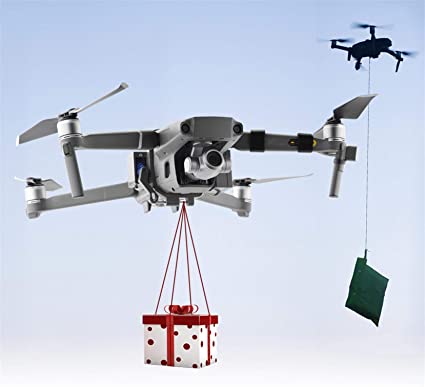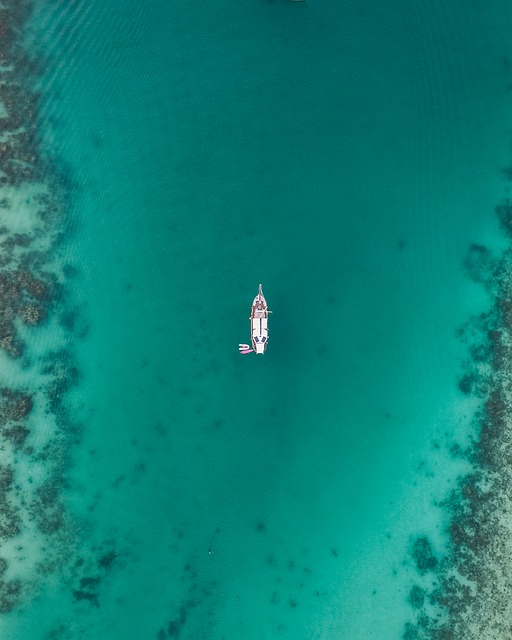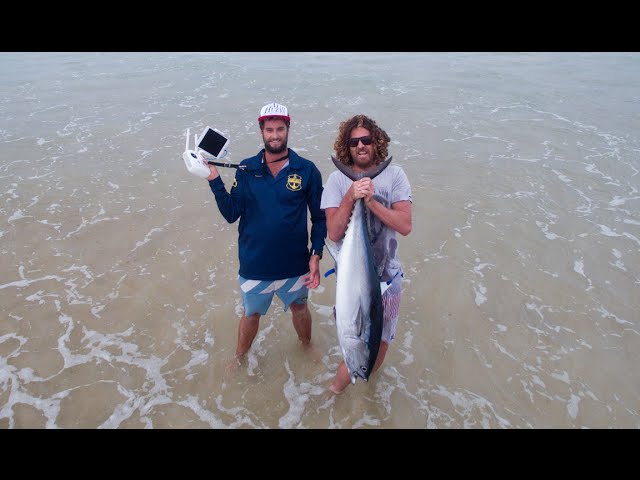
If you are a passionate fisherman, and you live in Australia you can use a drone for an aerial view of your property's waters. Drones come with various features like a mechanical payload release, an angle adjustable camera, GPS positioning system, and a GPS receiver. You can also buy fishing line that you can use to fish. These lines are highly stable and reliable. One such example is the SKY RIGGER drone.
SKY RIGGER is a drone fishing line
The SKY RIGGER flexible fishing line system allows you to fish from the sky with minimum effort. The system has two rotating leg clamps that can be mounted on a wide variety of drone models. The release mechanism includes a bayonet connector and a cam-lock arm, which allows you to quickly unlock the line clamps. The Sky RIGGER does not require batteries, unlike other drones. It can safely accommodate all types of fishing techniques.
The SKY RIGGER comes with an automatic release mechanism that allows you to let go of the line when a fish catches your fly. You can also manually let go of the line by using your rod or hand. This feature can be found on all models. It is recommended that you purchase a Phantom 3 before purchasing the new SKY RIGGER. These are the pros and cons of this new line system.
It has a mechanical payload release
A good drone's mechanical payload release is one of its most important characteristics. Many are designed to make it easy for anglers to remove their fishing line. Some models have no release mechanism. To remove the drone from the fishing line, the user must "yank” the line. This can be difficult, especially for those who aren’t used to releasing the line with their hands.

A payload release mechanism is also an important feature. When a fish strikes, the payload must be able release the line from the drone. Before you try this method, it is important that you practice catch-and-release fishing. The fish cannot be pulled to shore and then released back into the water. Several people have reported good results with the DJI Phantom drone. However, the technology is not yet up to the standard of other fishing drones.
It features a GPS positioning device
Rippton is a joint venture of Australia and Holland that specializes exclusively in technology-oriented fishing gear. Its mission is to increase angler success rates through the development of products that enhance fishing experience. Rippton's Mobula drone has a GPS positioning system as well as a remote release. The Mobula drone can store bait at the top, protect against kite clippings, and is eco-friendly.
It is lightweight and weighs just 3 lbs. It can fly for up 18 minutes. It has a high tech GPS system that can be controlled from as far as 2,000 meters away. It has an operating range of 1000m (or half a mile) and intelligent flight modes. The point of interest feature allows it to take high-quality photos of its surroundings. You can get amazing views of fish with its high-resolution camera.
It comes with a failsafe feature
Aerokontiki has an emergency feature that allows it to monitor the battery level and release the fishing line if necessary. In the event of a failure of the battery, it will return to dry ground so that it can continue its mission. It can be operated anywhere with its industrial-grade flight control system. You can use this drone even in very difficult water conditions.

FAQ
Are drones allowed to be used at public events
You can fly your drone anywhere you like, provided you adhere to the rules. The event organizers will require approval if you plan on flying your drone during a public event like a parade, festival, concert or other similar event.
What are the rules of operation when using drones?
Register your drone with the FAA. The registration process requires you to provide information about your device, such as its weight, dimensions, battery capacity, operating frequency, and battery life. A FAA identification number is also required.
How can I keep drones off my property?
Drones are becoming increasingly popular for home surveillance, but they also threaten privacy and security. If you want to avoid drone attacks, you should install motion sensors around your property and use them to detect any unauthorized flying objects.
Statistics
- According to ZipRecruiter, the minimum hourly wage of drone pilots is $20. (thedroneu.com)
- With the top 10% making over $100/h and the bottom 10% making as low as $10/h. (dronesgator.com)
- According to Indeed, a drone pilot gets paid $25.73 per hour on average in the US. (dronesgator.com)
External Links
How To
How to Fly Drones With Beginners
A drone is a remotely-controlled aircraft that is used for aerial photography and surveillance. Drone technology has been around since World War II. However, commercial use began in 2010 when DJI released their Phantom series of quadcopters. Since then, there have been many different types of drones available, from beginner-friendly models like the Parrot AR Drone 2.0 to professional-grade multi-rotor craft like the DJI Mavic Pro.
There are many options for flying a drone.
-
Remote control - This method uses a control device attached to your hand, which enables you to steer the drone through its flight path. There are two types of controllers available: joysticks and on/off switches.
-
Manual Control – This method lets users remotely control the drone by using a smartphone app. You must keep track of the location where you want the drone to go and follow the instructions from the app.
-
Autonomous Flight – This is when the drone handles all the piloting tasks. The drone is able to fly autonomously, without the need for human intervention. For the autonomous flight to occur, the drone must have a built-in camera and sensors capable of capturing images and data.
-
Triggered Flying - This method works in the same way as manual control. However, the pilot has to manually set up a route for the drone and it follows that route until reaching the endpoint. Once the programmed route is completed, the drone lands automatically and returns back to the base.
-
Landing Gear: Some drones have landing gear that allows them safely to land in case they lose power or run low on battery.
-
Goggles - Some pilots wear goggles to protect themselves from debris while operating.
-
Camera – Some drones have cameras, which allow you to take photos or videos from up high.
-
Obstacles. Some drones can have obstacle avoidance technology that stops them from hitting obstacles.
-
Speed - Some drones can reach speeds of over 40 mph.
-
Battery Life: Most drones have a battery life of between 20 and 30 minutes depending on how many power sources you use.
-
Range - Depending on the model, some drones can travel up to 30 miles away.
-
Power source - Some drones require an external power source; others work off internal batteries.
-
Weight - Some drones weigh less than 1 pound, whereas other models weigh up to 4 pounds.
-
Size - Drones come in many sizes, from small gadgets that fit in one's hands to large craft that weigh more than 50 lbs.
-
Price - From high-end models that cost thousands of dollars to low-cost options that start at $100, all drones fall under a certain price category.